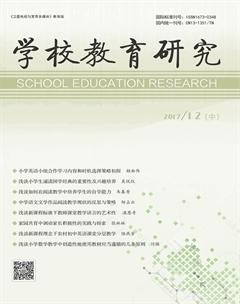Cultural Differences And Translation
高海燕
1.The definition of culture
No matter in China or in foreign countries, the definition of culture is a broad one. “culture” was later expanded to indicate “a general process of intellectual, spiritual and aesthetic development”.
2.Cultural differences
2.1 Historical culture differences
Every nation has its own historical origin and development, so historical culture has plentiful content. we can analyze these sentences and make their meanings close to the original if we know the historical background.
2.2 Geographical culture differences
Geographical culture plays an important part in translation. In western countries, they have convenient sea transportation. So they develop their own culture about maritime navigation. When the English meet each other, they often say “Its a fine day, isnt it?” but when we meet our friends we often ask “Have you eaten your breakfast or lunch?” We like east wind, for it can make all living things come back to life. On the contrary, in England, they do not like east wind, they like west wind, because west wind can bring them warm weather and rainwater.
2.3 Religious differences
The Christian, the Islam and the Buddhism are the three religions which we believe. Westerns believe in Christian mostly, thinking the world is created by God, so they often say “My lord/ My Christ” when they feel surprise. While we have Chinese words such as “yudi, guanyin” and so on.
2.4 Values differences
In western countries, they emphasize “individualism”, but we tend to value “collectivism”. It is the basic difference between the East and the West. In traditional culture, bat is a symbol of happiness, because it is a homophony of “福”. In the legends of western countries, bat is an ugly and evil animal; they often take it as evil power, and especially the vampire bats make them feel terrible.
2.5 Custom and etiquettes differences
Custom differences have many aspects. Greeting is the first step to form communication. Now just let us see how we Chinese greet each other. If we meet a friend in the street, we are used to say: Where are you going? They often shake hands when it is the case of two gentlemen. However, in the Western countries, questions and greeting are two things. If you ask about their meals they will think that you are inviting them to dinner. They often just give each other a smile or greet with a “hi”.
3.Cultural differences and translation
3.1 The relationship between cultural differences and translation
First of all, translation definitely involves culture, translation promotes cultural fusion and cultural development, compared with the cross-cultural communication in the past, todays cross-cultural communication is more complicated. We have more chance to contact with foreigners, do business with them, so in order to communicate with them well, we should have a full understanding of the meanings of some important concepts. All these let students know that each culture is unique.
3.2 Translation strategies: Domestication or Foreignization
The conflict between domestication and foreignization as opposite translation strategies can be regarded as the extension of the time-worn controversy over liberal translation and literal translation. The foregoing discussion have displayed the significance of cultural differences. However, the most difficult thing in translating confronting translators is how to deal with cultural differences reflected in languages. Generally speaking, there are two strategies for translators to resort to when they confront cultural difficulties: namely domestication and foreignization.
4.Conclusion
The history of translation is as longstanding as language; since the language appears, we know translation. The differences between the languages add to the cultural differences. Translation is the activity to conquer this difficulty. Culture differences have an important influence in translation.Language and culture relate with each other closely; the differences between cultures can reflect the language.Different languages have their own characteristics and forms. Different languages, then, may use different linguistic forms. But these forms are only one of the aspects of the differences between the two language systems.

